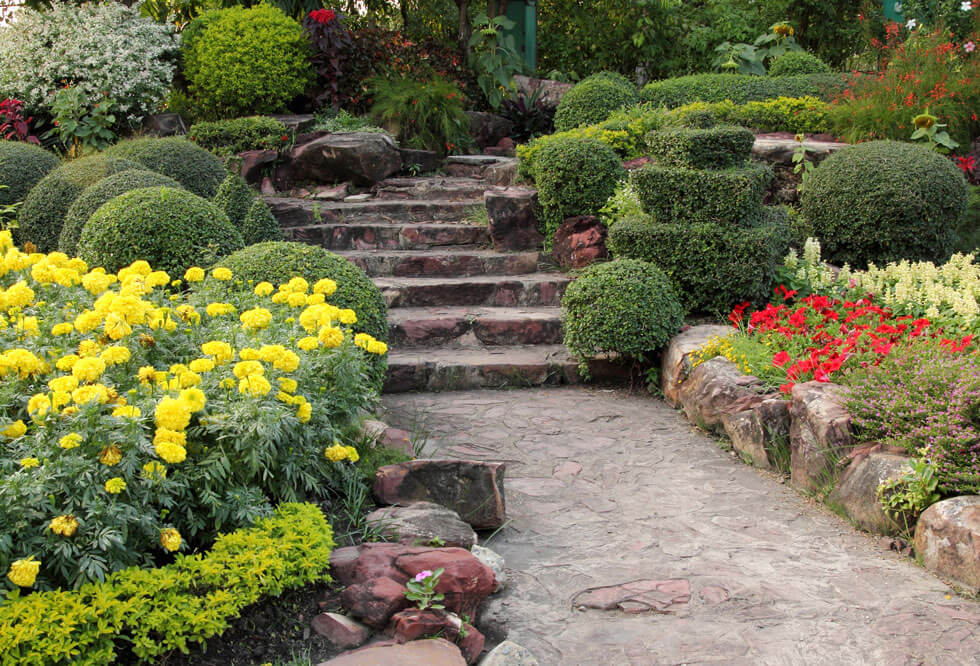Welcome to the world of landscaping! If you’ve found yourself asking, “What is landscaping?” you’re in the right place. Landscaping is more than just mowing grass or planting flowers. It’s about sculpting outdoor living spaces into works of art.
In the simplest terms, landscaping involves making changes to your outdoor space to make it more attractive and functional. This could involve planting trees, laying grass, creating flower beds, installing patios, or adding structures like gazebos.
This guide is designed to demystify good landscaping and equip you with the basic knowledge to start your landscaping journey. Remember, every expert was once a beginner. You’ve taken the first step just by being here, and we’re excited to embark on this journey with you.
The Art and Science of Landscaping
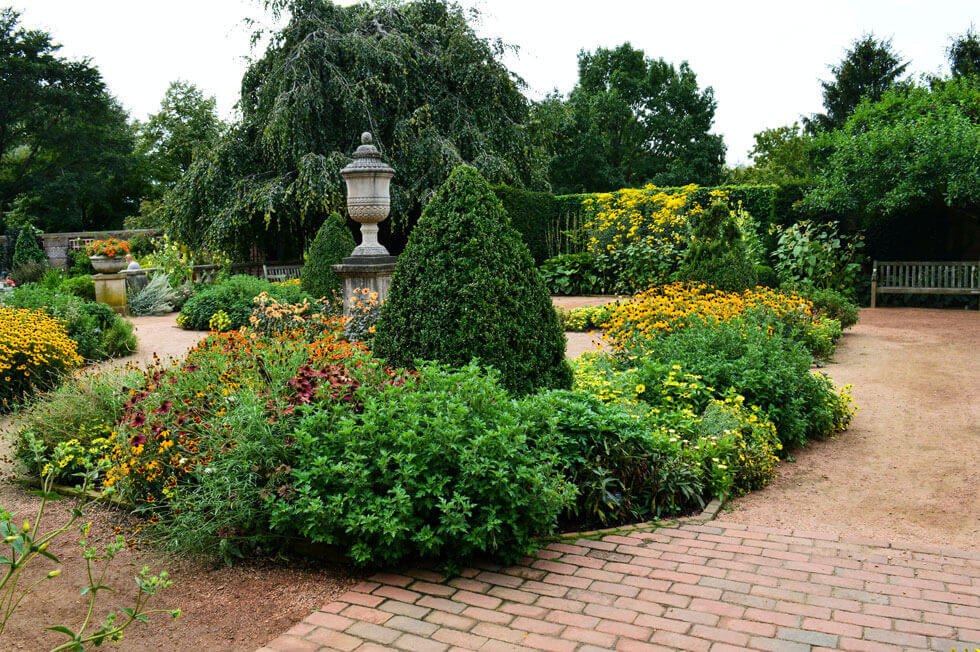
What is landscaping? Well, Landscaping is both an art and a science. Understanding its fundamental principles is key to creating a beautiful, balanced space. Let’s start by exploring design, balance, and proportion.
The design of a landscape is much like a blueprint. It’s the framework around which everything else is built. Good design considers the use of space, the selection of plants and materials, and how these elements can work together to create a cohesive, aesthetically pleasing environment.
Balance in a landscape refers to the perception of equal visual weight throughout the space. This can be achieved in two ways: symmetrical balance, where elements on either side of the landscape mirror each other, and asymmetrical balance, where different elements have equal visual weight.
Proportion, another key principle, pertains to the size relationship between elements in your landscape. For a pleasing visual effect, the size of the plants and objects should be in proportion to the house, each other, and the yard itself.
Understanding Your Landscape
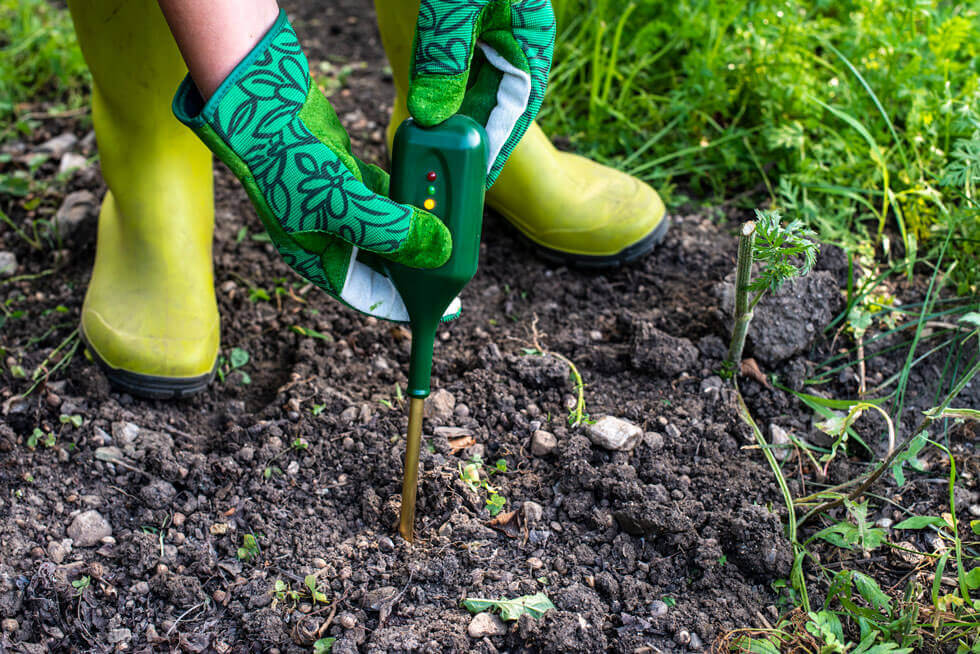
Before you start any landscaping project, it’s essential to understand your landscape. This involves assessing your outdoor space and considering several key factors:
- Soil Type – Different plants require different soil types to grow properly. Some thrive in loamy soil, while others prefer sandy or clay soils. It’s important to know what type of soil you have and choose the right ones for your landscape.
- Climate – Your local climate significantly impacts what plants will thrive in your landscape. Understanding your climate will help you select the right plants and ensure they thrive.
- Sunlight – Sunlight is crucial for plant growth. Assess the amount of sunlight your outdoor space gets throughout the day to help you decide where to plant certain plants.
Essential Tools and Equipment for Landscaping
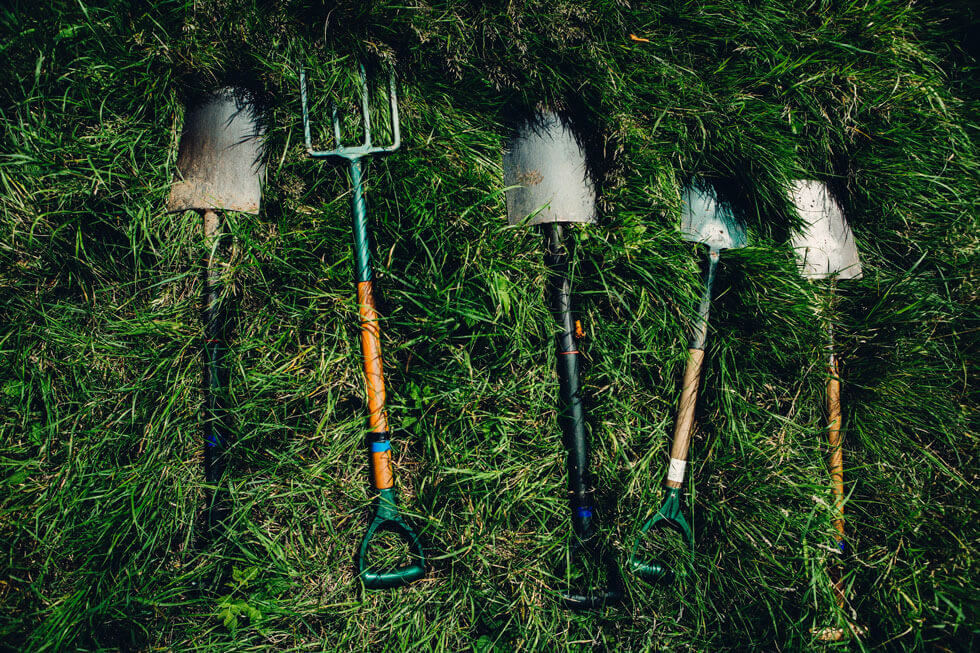
Here is a comprehensive list of tools every beginner should have:
- Garden Gloves: Protect your hands from blisters, spiky thorns, and dirt with a durable pair of garden gloves.
- Shovel: A must-have for digging holes for plants, moving dirt, and other heavy-duty tasks.
- Garden Fork: This tool is excellent for turning soil and mixing in compost or some other organic matter.
- Garden Hoe: Use this tool for weed removal and for shaping the soil.
- Pruning Shears: Essential for trimming and shaping plants and bushes.
- Rake: Great for clearing leaves and debris from your lawn.
- Garden Hose with Adjustable Nozzle: For watering your plants. The adjustable nozzle allows you to control the water flow.
- Wheelbarrow: Handy for moving soil, compost, and garden waste.
- Lawn Mower: If you have a grassy area, a lawn mower is a must to keep your lawn neat and trim.
- Spade: This tool is perfect for edging beds and digging up smaller amounts of soil.
- Trowel: Ideal for planting smaller plants and flowers.
Landscaping Styles and Themes
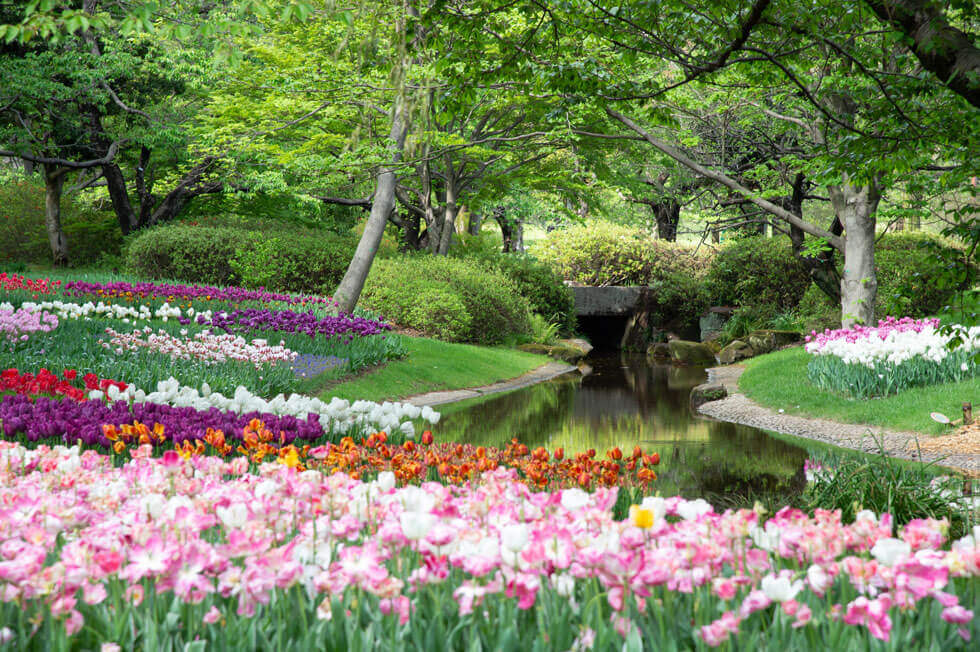
Here are some popular landscaping styles that you might consider:
- Tropical: This style is characterized by lush, vibrant plants and trees that are native to tropical climates. Think palm trees, ferns, and colorful flowers.
- Woodland: This style aims to mimic the natural growth of a woodland area, with trees, shrubs, and ground cover plants arranged in a seemingly random fashion.
- Prairie: Prairie landscapes feature grasses and wildflowers that are native to prairie regions. This style is great for low-maintenance, environmentally friendly gardens.
- Desert: Desert landscapes use drought-resistant plants such as cacti, succulents, and rocks and sand to create a landscape that can thrive in arid conditions.
- English Garden: English gardens aim to recreate the charm of a traditional English countryside garden, emphasizing flower beds, climbing plants, and quaint garden structures.
- Japanese Garden: Japanese gardens are designed to promote tranquility and reflection, featuring elements like ponds, bridges, rocks, and meticulously pruned plants.
- Tuscan: Tuscan landscapes are inspired by the Italian countryside, featuring elements like gravel paths, stone walls, and abundant aromatic herbs.
- Formal: Formal landscapes are characterized by symmetry, clear lines, and defined spaces. They often feature geometric shapes and neatly pruned plants.
- Informal: Informal landscapes have a more natural and relaxed feel, with curving lines and a more random arrangement of plants.
Understanding the Role of Basic Landscaping Elements
The “What is landscaping question” is incomplete without the mention of its three basic elements. The essence of a captivating landscape lies in the harmonious blend of vegetation, hardscaping, and water features. Each component creates a balanced, visually appealing, and functional outdoor space.
Vegetation serves as the living canvas of your landscape. It introduces color, texture, and life into your outdoor space. Vegetation can be used to create privacy, offer shade, and shape views. Different plants can evoke different moods. A rose garden can feel romantic, a bed of wildflowers cheerful, and a Japanese maple contemplative.
Hardscaping, the non-living elements like paths, walls, and patios, provides structure and organization to your landscape. It guides movement, enhances existing features, defines outdoor spaces, and can create a visual counterpoint to the softness of plants. Materials can range from natural, like stone and gravel, to man-made, like bricks and concrete. The material selection should complement the property surrounding the building.
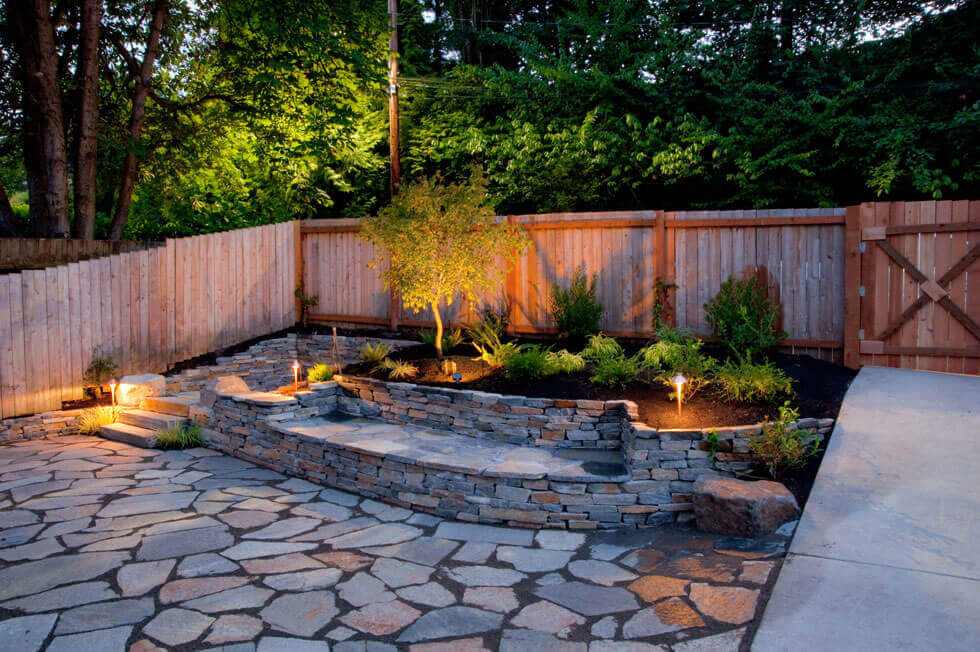
Water features like ponds, fountains, and streams add a dynamic and sensory layer to your landscape. The sound of moving water can be calming and mask undesirable noise, while still, water can be a mirror, reflecting the sky and surrounding plants. Water features can also attract wildlife, adding another interaction layer to your garden.
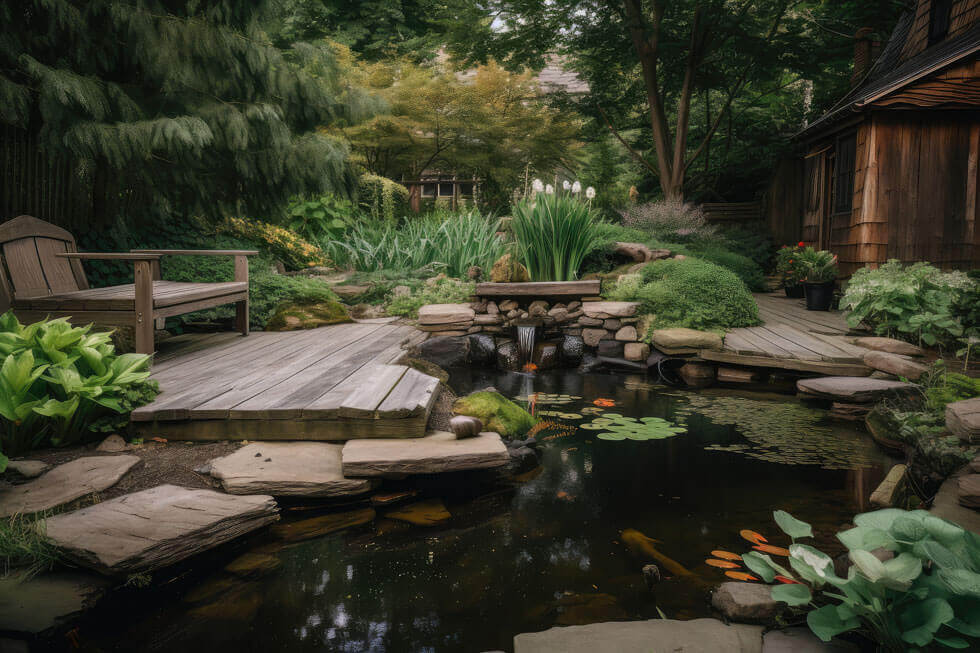
Plant Selection and Maintenance
The best way to choose plants is by considering factors like the amount of sunlight your garden receives, the quality of your soil, and how much maintenance you’re willing to do.
- Sunlight: Some plants require full sunlight, while others thrive in the shade. Before purchasing any plants, assess the amount of sunlight your garden receives throughout the day.
- Soil Quality: Different plants have different soil needs. Before planting, ensure to test your soil to determine its quality and choose plants that thrive in those conditions.
- Maintenance: If you’re new to gardening or don’t have much time, consider choosing plants requiring less pruning and watering.
Once you’ve chosen your plants, proper maintenance is key to keeping them healthy and beautiful. Here are some tips for care and upkeep:
- Watering: Over-watering is a common mistake in gardening. The amount of water a plant needs majorly depends on the type of plant, the quality of your soil, and your climate. As a general rule of thumb, it’s better to under-water than over-water.
- Fertilizing: While plants need nutrients to grow, too much fertilizer can harm your plants. It’s important to use the right type and amount of fertilizer for each specific type of plant.
- Pruning: Pruning helps make healthy plants even more healthier. However, not all plants should be pruned at the same time. Do some research to find out the best time of year to prune the specific plants in your garden.
- Disease and Pest Control: Look for any signs of disease or pests. If you notice something off, treating it as soon as possible is important to prevent it from spreading to other plants.
Creating a Budget-Friendly Landscape
- Start with a Plan: A well-thought-out design can save you from costly mistakes and unnecessary purchases. Sketch out a plan, keep a list of plants you love, and gradually create the garden of your dreams.
- DIY Where Possible: Save on labor costs by doing as much as you can yourself. Planting, painting, and building a simple pathway or patio are all achievable DIY tasks. There are plenty of tutorials and gardening advice available online to guide you.
- Choose Native Plants: Plants that are native to your area are more likely to thrive, are typically less maintenance, and are often less expensive. Plus, they support local ecosystems and wildlife.
- Buy in Bulk: If you need a large quantity of soil, mulch, or stones, consider buying in bulk to save money.
- Grow from Seed or Cuttings: Buying mature plants can eat up your landscaping budget quickly. Consider growing plants from seeds or cuttings. It might take a little longer, but it can save you a lot of money.
- Trade Plants with Friends or Neighbors: Swapping plants is a fun exercise and a cost-effective way to add diversity to your garden.
DIY vs. Professional Landscaping Services
Do-It-Yourself Landscaping
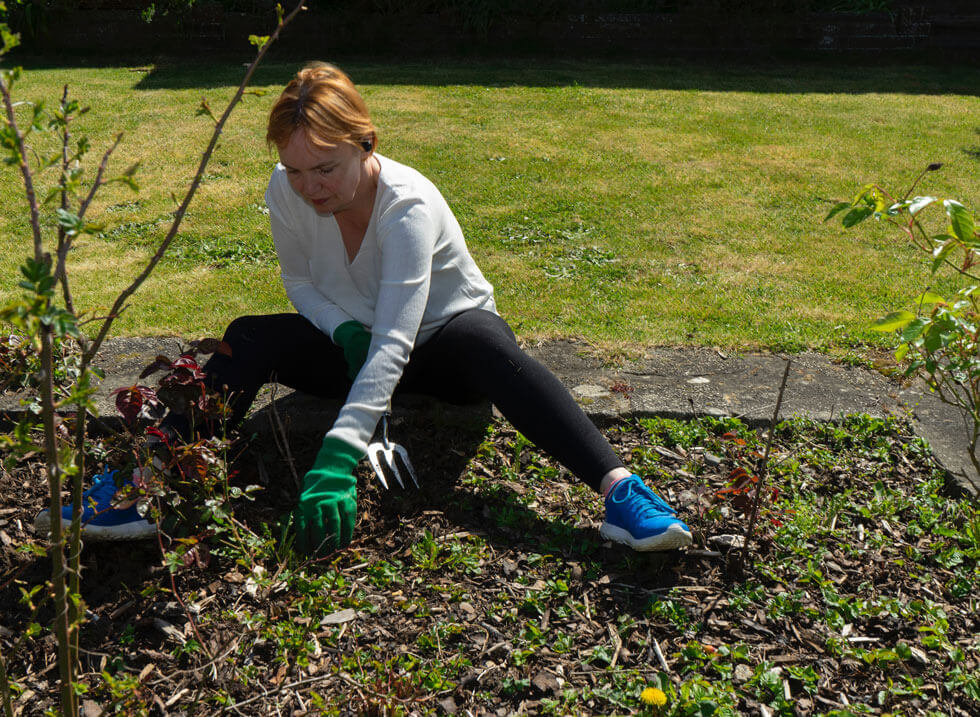
DIY landscaping allows for complete creative control, gives a sense of fulfillment, and can be more cost-effective.
Pros:
- Cost-Effective: DIY landscaping can save you the cost of labor, which can be significant, depending on the scope of your project.
- Personal Satisfaction: There’s a unique fulfillment in completing a project with your own hands. Seeing your vision come to life can be incredibly rewarding.
- Customization: When you DIY, you have total control over every aspect of the project.
Cons:
- Time-Consuming: Landscaping projects can take a substantial amount of time to complete, especially without experience.
- Quality: Without the proper expertise, the end result might not meet your initial expectations or professional standards.
- Physical Labor: Landscaping work can be physically demanding.
Hiring a Professional Landscaping Service
Professional landscape designers or landscape architects bring expertise and experience, ensuring high-quality results.
Pros:
- Expertise: Professionals have the knowledge and experience to handle any unexpected issues that may arise. They can also advise on design and plant selection based on your region’s climate and soil.
- Time-Saving: Hiring professionals can save you a significant amount of time, which you can spend on other activities.
- Quality Results: Professionals have the correct tools and expertise to ensure a high standard of work, which can add to the value of your property.
Cons:
- Costly: Professional landscaping services can be expensive, especially for large projects or ongoing maintenance.
- Less Personal Involvement: While professionals will work according to your specifications, you might feel less connected to the project.
- Availability: Depending on their schedule, you may have to wait for their services.
Sustainable Landscaping Practices
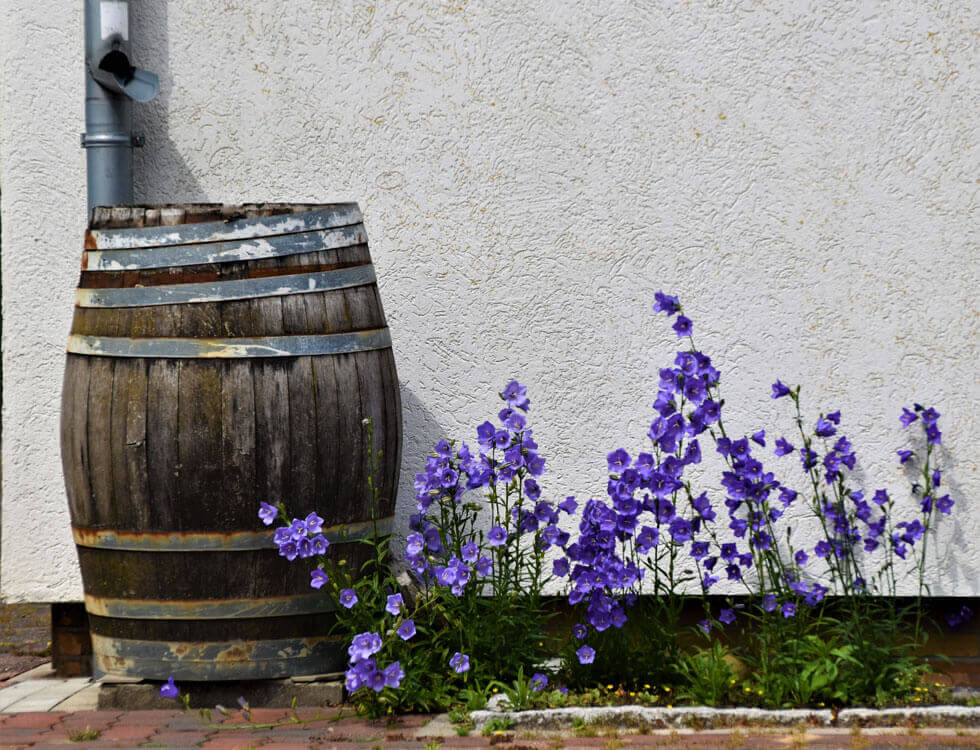
- Utilize Rainwater Harvesting: Systems like rain barrels or underground cisterns can collect and store rainwater, which can later be used for irrigation. This conserves water and reduces dependency on municipal water supply.
- Choose Drought-Resistant Flora: Opt for plants that require less water, especially in a region with scarce rainfall. Such plants, often native to the area, are adapted to the local climate and need less maintenance.
- Implement Irrigation Systems: Drip irrigation is a more efficient method of watering plants because it delivers water directly to the plant’s root zone. This reduces water waste through evaporation or runoff.
- Incorporate Mulch in Your Garden: Mulch can help retain soil moisture and suppress weed growth, reducing the need for watering and chemical herbicides.
- Design with Permeable Paving: Permeable paving materials allow rainwater to infiltrate the ground, replenishing groundwater and reducing runoff.
Troubleshooting Common Landscaping Issues
If you need the answer to “what is landscaping” then keep in mind that the answer runs through troubleshooting some common landscaping problems.
- Pest Control: Landscaping requires plant health and beauty maintenance, but pests can pose a threat. Effective methods include organic pest control, like introducing beneficial insects or using homemade sprays with mild soap or hot pepper. Remember, some insects are natural pest controllers, so avoid harming all insects indiscriminately.
- Drainage Problems: Inadequate drainage leads to waterlogged soil and unhealthy plants. To address this, incorporate landscape features that improve drainage. Rain gardens, for instance, use plants to naturally absorb excess water in your yard.
- Plant Diseases: They can result from poor plant health, pests, or unsuitable conditions. Inspect your plants regularly for disease signs, maintain proper watering and feeding practices, and provide suitable light and soil conditions. If you notice a problem, local garden centers or extension services can identify and suggest organic or low-toxicity treatments.

